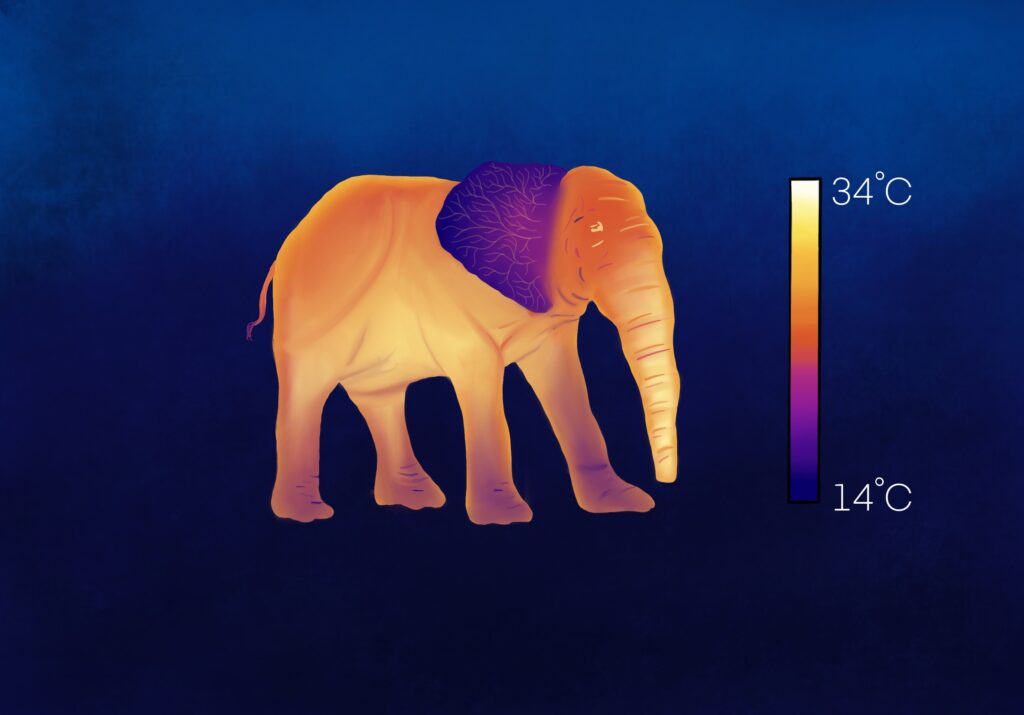This STEAM project compares behavioral and physiological thermoregulation strategies of animals, specifically focusing on that of emperor penguins (Aptenodytes forsteri) and African elephants (Loxodonta africana). Thermoregulation incorporates all phenomena, both behavioral and physiological, by which an organism maintains its body temperature within certain boundaries. This is a dynamic, homeostatic interaction between an organism’s internal processes and its external environment. Animals have developed very diverse strategies for coping with temperatures and associated physiological risks of extreme temperatures. The accompanying art work aims to convey two strategies by which animals cope with temperatures; the behavioral strategy of group huddling in penguins, and the physiological strategy of vasodilation in the ears of elephants. To articulate the concept, we composed the accompanying artistic pieces as seen through the lens of a thermal imaging camera which illustrates the varying temperatures throughout the body of each animal. The penguin image shows all penguins with warm feet due to their cross-current heat exchange, and a colder, singular penguin next to a warmer, huddled group. The elephant image shows the temperature of its body, emphasizing the ‘thermal windows’ of the ears which function to cool down the blood via vasodilation.


Objective: Compare and contrast behavioral and physiological strategies for coping with temperatures
